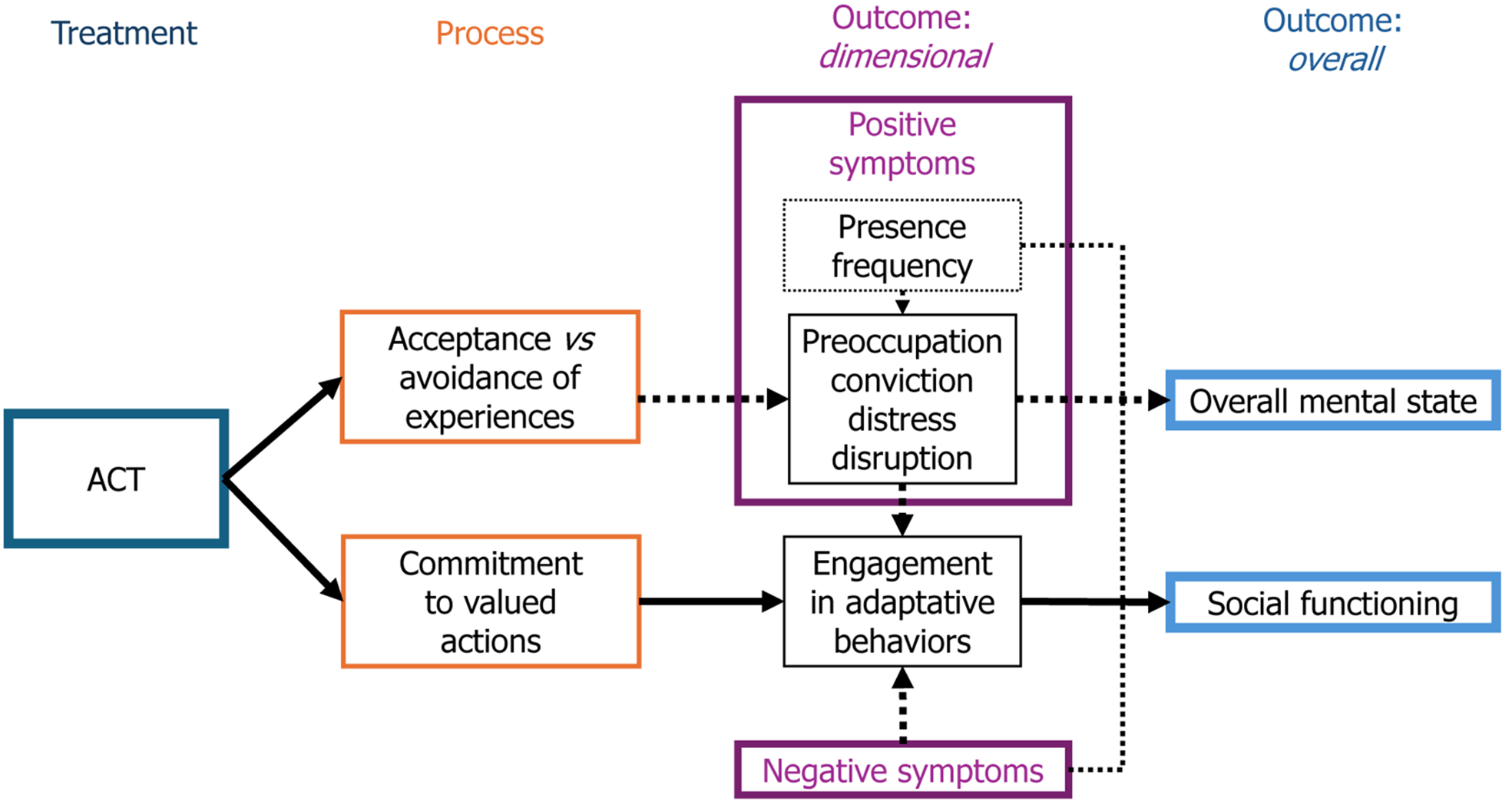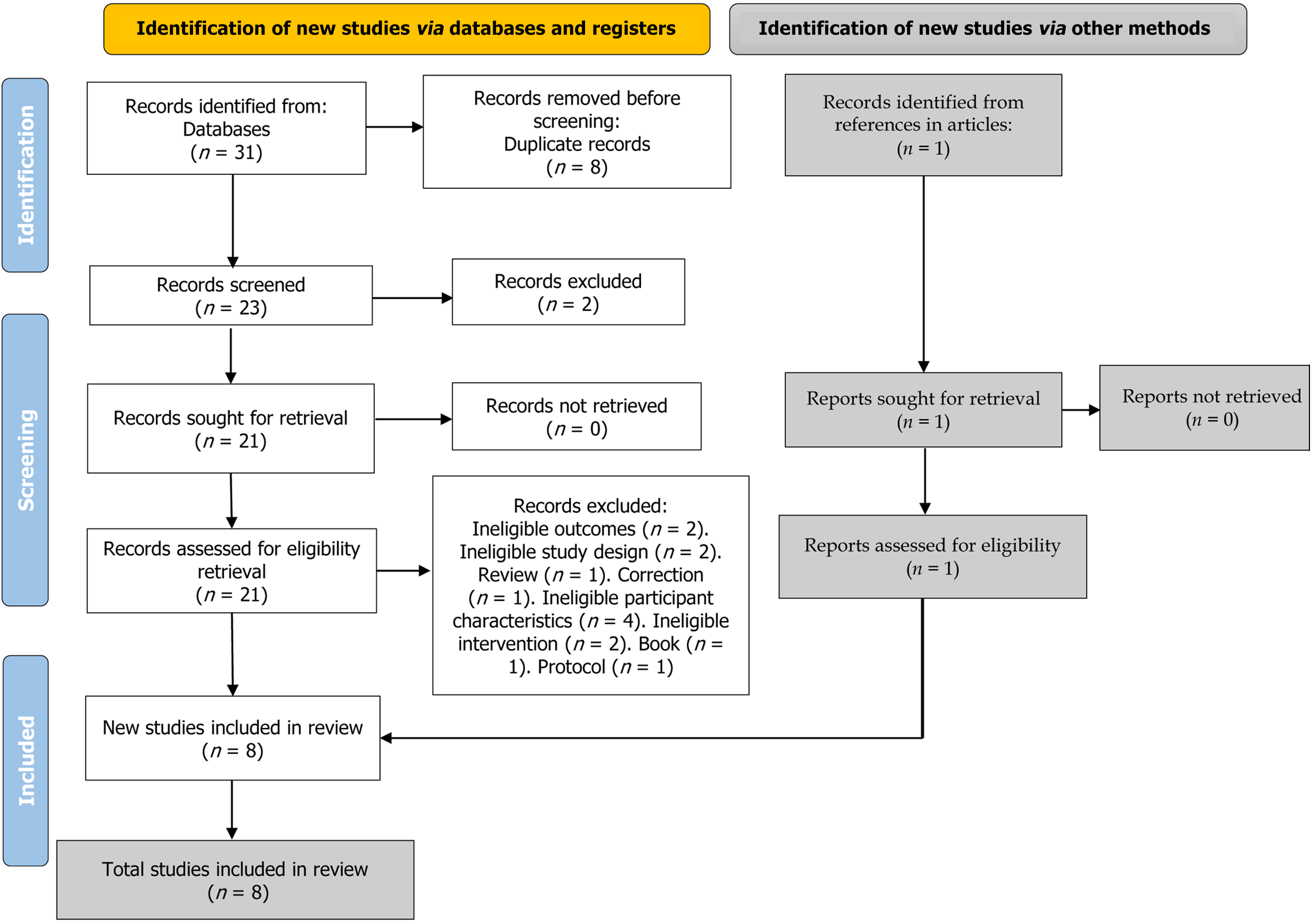Copyright
©The Author(s) 2025.
World J Psychiatry. Aug 19, 2025; 15(8): 107313
Published online Aug 19, 2025. doi: 10.5498/wjp.v15.i8.107313
Published online Aug 19, 2025. doi: 10.5498/wjp.v15.i8.107313
Figure 1 The “Hexaflex model”.
This figure illustrates the interaction between the six core processes in acceptance and commitment therapy. Adapted from Hayes and Lillis[14].
Figure 2 Hypothesized mechanisms of action of acceptance and commitment therapy for psychosis.
Adapted from Thomas et al[47]. Acceptance and defusion reduce preoccupation, conviction, distress, and life interference related to positive symptoms and improve them. Engaging in values-based actions promotes adaptive behavioral changes and improves negative symptoms. The network of changes leads to an overall improvement in mental state and social functioning. ACT: Acceptance and commitment therapy.
Figure 3 PRISMA flow diagram of search and study selection process.
- Citation: Pena-Garijo J, Baeza-Mor T, Martinez-Raga J. Acceptance and commitment therapy applied to early psychosis: Therapeutic foundations and a narrative systematic review. World J Psychiatry 2025; 15(8): 107313
- URL: https://www.wjgnet.com/2220-3206/full/v15/i8/107313.htm
- DOI: https://dx.doi.org/10.5498/wjp.v15.i8.107313











